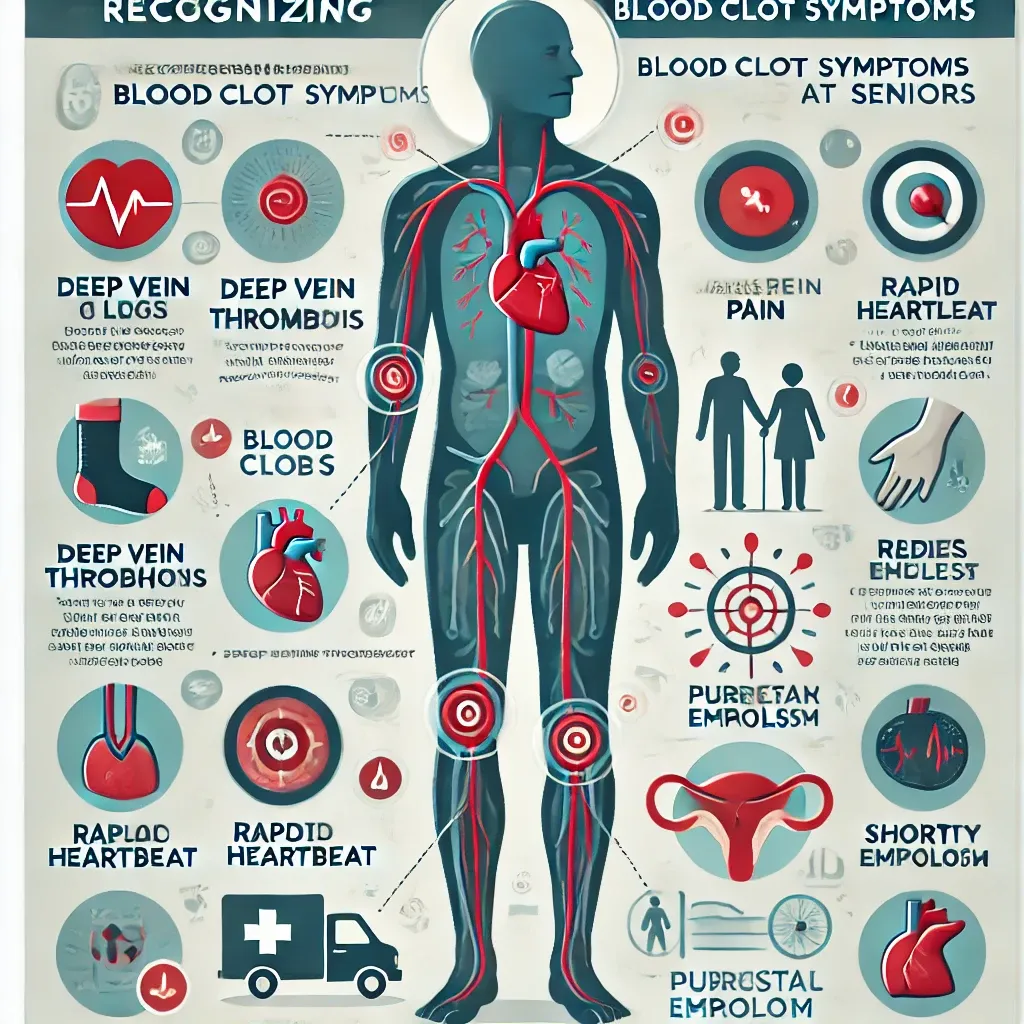Seniors: Life-Saving Blood Clot Signs You Can't Afford to Miss
Did you know that 1 in 4 people die from causes related to blood clots? Many seniors dismiss critical warning signs, often mistaking them for less serious issues. However, being aware of key symptoms can save lives. Recognizing the signs of blood clots requires no special medical knowledge and empowers older adults to take control of their health. Learn how identifying these symptoms can be one of the most important steps you take for your well-being today.

What Are Blood Clots?
Blood clots are solid masses formed when blood cells clump together. While clotting is a natural process to stop bleeding, clots that form within blood vessels can be dangerous. They may obstruct blood flow, leading to serious complications. Blood clots most commonly occur in the legs, known as deep vein thrombosis (DVT), and can travel to the lungs, causing a pulmonary embolism (PE), a potentially life-threatening condition. Early recognition of blood clot symptoms is essential to preventing severe outcomes.
Key Symptoms of Blood Clots
Here are the most important signs of a blood clot that seniors should never ignore:
1. Swelling
Unexplained swelling in one limb, often the leg, is a common sign of DVT. It may be accompanied by:
- Pain, warmth, or redness in the affected area.
- Tenderness or swelling to the touch.
- Skin that appears shiny or discolored.
2. Pain or Tenderness
Persistent pain or tenderness in the leg or calf can signal the presence of a clot. The discomfort may:
- Worsen with standing or walking.
- Feel similar to a cramp or muscle strain.
3. Skin Changes
Skin discoloration, such as redness or a bluish tint, may indicate reduced blood flow caused by a clot. Other changes include:
- Warmth in the affected area.
- Visible signs of inflammation.
4. Shortness of Breath
Sudden difficulty breathing, rapid breathing, or sharp chest pain can indicate a pulmonary embolism. Other signs include:
- Coughing up blood.
- A feeling of impending doom.
Seek emergency medical attention if you experience any of these symptoms.
5. Rapid Heart Rate
An unusually fast heart rate, particularly when paired with chest pain, dizziness, or lightheadedness, may suggest a pulmonary embolism or another clot-related complication.
6. Unexplained Cough
A persistent cough, especially one that produces blood-tinged mucus, is a red flag for a pulmonary embolism and requires immediate medical care.
7. Sudden Chest Pain
Sharp, severe chest pain that worsens with deep breathing or coughing can be a symptom of a pulmonary embolism. This is a medical emergency and should not be ignored.
Who Is at Risk?
Certain factors increase the likelihood of developing blood clots, including:
- Age: Seniors are at higher risk due to reduced mobility and underlying health conditions.
- Prolonged Immobility: Extended periods of sitting or lying down, such as during long flights or hospital stays.
- Surgery or Trauma: Procedures, especially orthopedic surgeries, increase clotting risks.
- Pregnancy: Hormonal changes and pressure on veins can contribute to clot formation.
- Family History: A history of clotting disorders in the family.
- Chronic Conditions: Diseases like diabetes, obesity, and cancer elevate the risk.
Being proactive and vigilant about these risk factors can greatly reduce the chances of complications.


